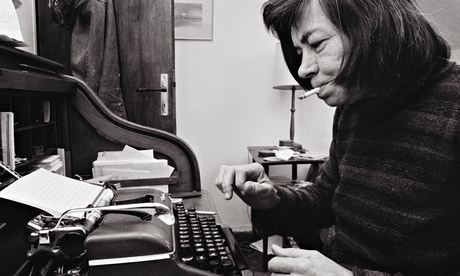
With The Two Faces of January released on Friday, its director and screenwriter Hossein Amini joins a distinguished lineup of Patricia Highsmith adapters that includes Alfred Hitchcock (Strangers on a Train), René Clement (Plein Soleil, AKA Purple Noon), Wim Wenders (The American Friend), Claude Chabrol (The Cry of the Owl) and Anthony Minghella (The Talented Mr Ripley).
In his biography of Highsmith, Beautiful Shadow, Andrew Wilson partly credits Minghella's film – which Hosseini's resembles in centring on American travellers in Europe – for the fact that, since its release in 1999, "the power of her work is finally being appreciated". Not least by other directors: a version of The Blunderer was announced this week at Cannes, Todd Haynes is filming the lesbian love story Carol (starring Cate Blanchett) and adaptations of Deep Water and This Sweet Sickness have been mooted. By contrast, no movies based on works by Daphne du Maurier, the other mother of the psychological thriller, are currently in production, and the aural fiasco of BBC1's Jamaica Inn makes further Du Maurier television projects unlikely in the near future.
A similar boom is evident in crime fiction, where two of the hottest hits of recent years, Before I Go to Sleep and Gone Girl, were by Highsmith disciples SJ Watson and Gillian Flynn ("I love her so much"), who has acknowledged the influence of the marital thriller Deep Water on her own portrait of a marriage. How did Highsmith become so hip? In cinema, the main factors seem to be a new awareness of the diversity of her work beyond the Ripley series, and the latterly acquired potential for period nostalgia – although her writing is spare, post-Hitchcock film adaptations have been visually gorgeous, juxtaposing nasty people with lovely backdrops, such as The Two Faces of January's 1960s Athens. For would-be female crime writers today, part of her appeal is that her protagonists are civilians, in contrast to other potential role models, from PD James and Ruth Rendell onwards, who staged a takeover of the police detective novel (although Rendell later developed a cop-free Highsmith-esque sideline as Barbara Vine). These are contemporary, urban characters, making them more "relatable", at least for grownups, than Du Maurier's heroines, who usually live either in the past or in rural mansions.
Today's proliferating psychological thrillers, however, tend to combine Highsmithian modern setups with Du Maurier's first-person narrative technique in Rebecca, a fusion probably pioneered by Nicci French in a bestselling series starting in the late 90s and now widely adopted as bookshops are inundated with tales of stalker nightmares, sociopathic ex-husbands or bosses and evil best friends.
So Highsmith has been adapted in both mediums with results that are at once like, and strikingly unlike her work: films that are feel-good as well as feel-bad because the stars are as attractive and famous as the settings, novels influenced by her, yet narrated by likable middle-class women the reader empathises with (whereas she was merciless towards her female characters, who are anyway often off-centre).
Diluted and detoxified she may be, but the boom is set to continue with more Highsmith-derived movies and novels alongside the films and reissues bearing her name: screen adaptations of Before I Go to Sleep and Gone Girl are due in the autumn, and the inevitable wave of thrillers influenced by Watson and Flynn has only just begun. One telling sign of the current vogue is how regularly her name is invoked in blurbs or on book jackets, often to promote novels with only the flimsiest of connections (authorial longing for Jude Law to play the male lead, say) with Highsmith.

